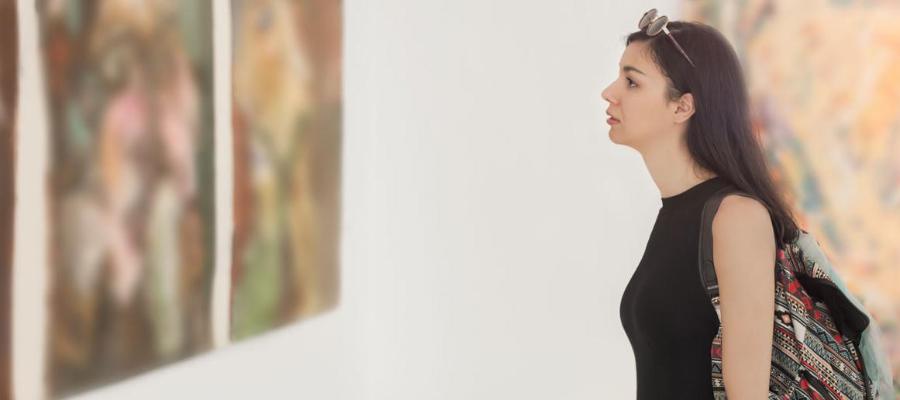
This program provides you with skills that are highly valued in many professions and advanced degree programs. Grounded in the history of creativity, you will learn to analyze and interpret information, think critically and communicate effectively. You will benefit from expert lectures and access to two on-campus art galleries that showcase professional and student work throughout the year. Our curriculum is also enhanced by AACC's proximity to nationally renowned museums in Baltimore and Washington, D.C., where you'll view artworks of historical significance.
The Visual Arts department is proud to offer the Associate of Arts (A.A.) in Art History and Museum Studies.
The Art History/Museum Studies major is designed to help students transfer to a university where they will continue their education. Art history survey courses, such as History of Western Art 1 & 2, give students the foundational knowledge they need while allowing them to choose electives and dive deeper into areas they find most interesting.
Most art history and museum jobs require at least a bachelor’s degree. Many of our students go on to earn bachelor's degrees in subjects such as history, communications, education and journalism. These bachelor degrees can be a stepping stone to postgraduate degrees in areas such as humanities, library and information science, public administration, education and law.
An associate's degree in Art History and Museum Studies is a useful starting point for careers in:
Most companies, whether a large corporation or a small nonprofit, will appreciate the problem solving skills and visual awareness of an Art History graduate.
If you decide to earn your A.A. degree in art history, you can transfer to complete your four-year degree. Art history and museum studies is unique in that it teaches skills with wide applications. Students not only go on to study history, but also may consider majoring in communication studies, education and journalism.
We have partnerships and transfer agreements in place with many colleges and universities so you can easily transfer when you're ready. Transfer agreements (or “articulation agreements,” as they’re officially called) are formal arrangements between institutions that allow certain credits to transfer seamlessly from one school to the other. After completing the art history program, you can seamlessly transfer to:
In addition to Goucher College, you can work with a transfer advisor to set up a specific plan to transfer to the four-year school of your choice.
Paying for college should be simple! Scholarships are available to help you prepare for your career in art history: